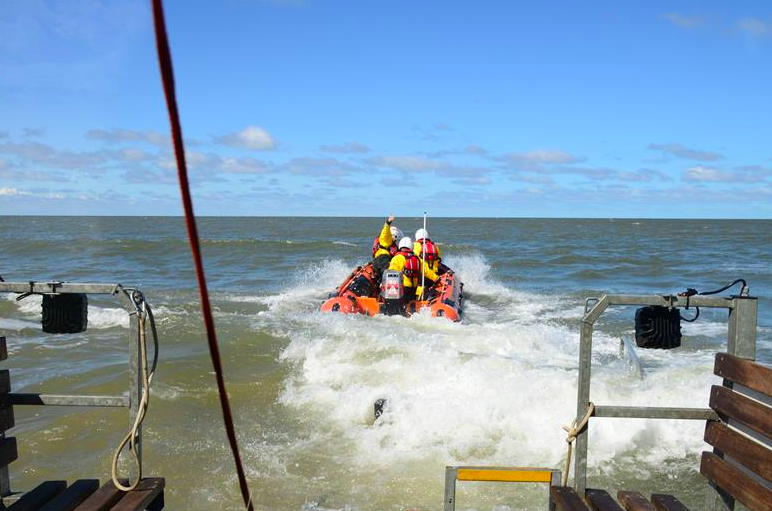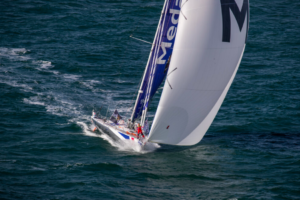Eight people saved by what3words – and RNLI

Skegness RNLI volunteers raced to rescue eight people cut off by tide last weekend (9May21) shortly before high water. Reports had come in of multiple stranded people.
The tide had formed a large lagoon between the town’s main beach and Gibraltar Point nature reserve, in an area known locally as Greenshanks Creek.
After following less than precise directions to the tricky ‘south of the river’, an updated what3words location was given which led the inshore lifeboat a mile north of the eight people (from several groups) who were unable to get across the flooding tidal waters.
It took three return journeys to safely ferry the stranded people back to the safety of the north side of the lagoon. The total operation lasted two and a half hours.
“It’s all too easy to get caught out by the incoming tide, even for people from the relatively local area as in this instance, especially when tides and the weather can influence the shape and access of the beach and make coastal features unpredictable,” says RNLI helmsman, Lee St Quinton. “Today we learnt of the power of the what3words app that allows emergency services and individual members of the public to precisely locate themselves to within a few metres.”
The app (available free of charge from most smartphone app stores) gives a three-word combination that can be used in emergencies to provide very accurate location information.
“It was pivotal in giving us the location of the stranded people,” says St Quinton.
The app’s already been cited in several RNLI call outs this year. In April, Wells Inshore lifeboat (pictured top) was tasked to assist a person shouting for help and clinging to a buoy in Blakeney Harbour.
In January, Aberystwyth lifeboat was asked to assist Dyfed Powys police and local coastguard units to help rescue two people cut off by the tide who’d identified their location with what3words.
While police officers pointed torches from above, the lifeboat quickly spotted the casualties were stuck on a ledge approximately 20ft above the sea.
With a very low mist, and in wet and slippery conditions, the decision was taken by the local coastguard to attempt a cliff rescue from above. The New Quay all weather lifeboat was tasked with lighting up the cliffs, while the coastguard helicopter from Caernarfon winched the casualties off the ledge.
“The casualties showed quick thinking to use the what3words app to pinpoint their location when they needed help, but we would always recommend people check the tide times before embarking into areas under the cliffs,” says Bryn Harrison, RNLI helm for Aberystwyth lifeboat.
The app principally came into being as street addresses weren’t designed for 2021. They aren’t accurate enough to specify precise locations, such as building entrances, and don’t exist for parks and many rural areas, say developers. This makes it hard to find places and prevents people from describing exactly where help is needed in an emergency.
Now the three-metre square solution is being used not only by people contacting emergency services, but also by delivery companies, drone tech and many, many more businesses.
Image courtesy of Ray West, RNLI. Wells RNLI volunteer crew launch from Holkham Bay.










